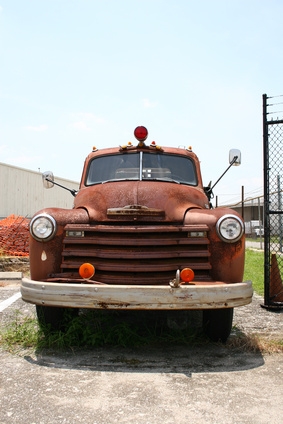
When a car's undercarriage rusts, you need to repair it immediately. Rust leads to weakening of the car's structure and eventually holes in the floor of the car. This is a danger to passengers and drivers alike. Repairing rusted undercarriages takes time; usually an afternoon or more is required. If you have not attempted this repair before or similar body repairs, allow yourself extra time to finish the job.
Remove the carpeting by pulling it up from the floor of the car. Use scissors or a knife to cut the carpet away if necessary. Or lift the car onto a hydraulic jack to gain access to the undercarriage area that requires repair.
Sand away rust spots with abrasive sandpaper on a block, or use a power drill and grinding disc for large areas of rust. Wipe down the undercarriage, after sanding, to remove all dust and sanding debris.
Clean the area with a solvent or automotive degreaser to remove dirt, grease and oil. Dry the area with a shop rag until all of the degreasing agent is removed.
Cut fiberglass strips to the proper length to cover the repair area. For best results, use several overlapping strips to cover the area to improve the strength of the repair.
Mix fiberglass resin and hardener compound in a container using the prescribed mixing ratio in the hardener instructions. Spread the fiberglass resin onto the strips with a plastic applicator then apply them to the undercarriage, covering the entire area with new fiberglass.
Allow the fiberglass to dry and harden overnight. This usually takes 12 to 24 hours. Sand the repair with 200-grit sandpaper until smooth. Paint the repair with automotive primer and a final top coat of automotive paint to seal the area.